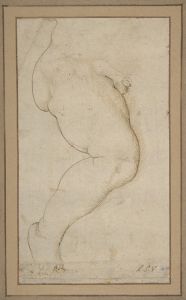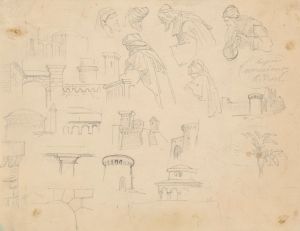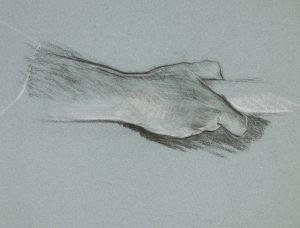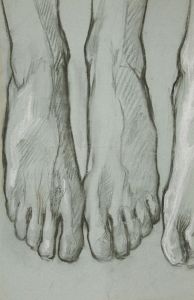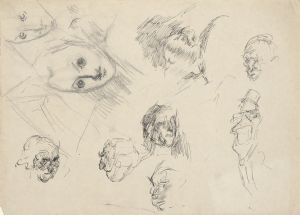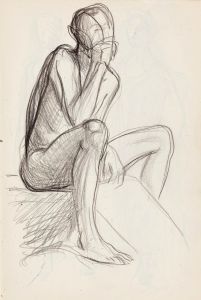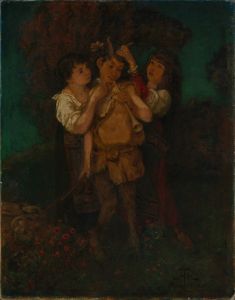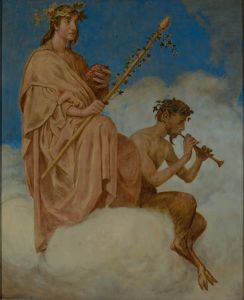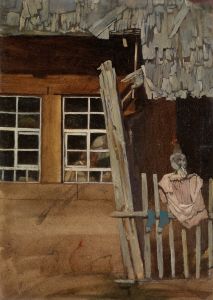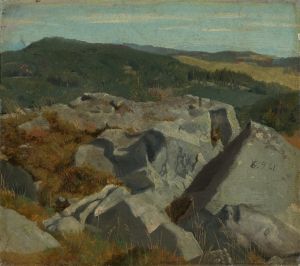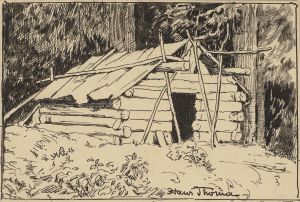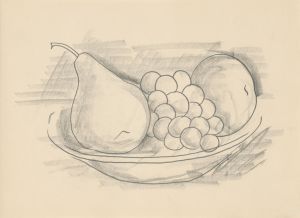
Sketchbook
A hand-painted replica of Hans Thoma’s masterpiece Sketchbook, meticulously crafted by professional artists to capture the true essence of the original. Each piece is created with museum-quality canvas and rare mineral pigments, carefully painted by experienced artists with delicate brushstrokes and rich, layered colors to perfectly recreate the texture of the original artwork. Unlike machine-printed reproductions, this hand-painted version brings the painting to life, infused with the artist’s emotions and skill in every stroke. Whether for personal collection or home decoration, it instantly elevates the artistic atmosphere of any space.
Hans Thoma (1839-1924) was a German painter and printmaker, known for his landscapes and portraits that often incorporated elements of German folklore and mythology. One of his notable works is "Sketchbook," which provides a glimpse into his artistic process and the development of his ideas.
"Sketchbook" by Hans Thoma is not a single painting but rather a collection of drawings and studies that Thoma created throughout his career. These sketches offer valuable insights into his creative process, showcasing his ability to capture the essence of his subjects with minimal lines and shading. The sketchbook includes a variety of subjects, ranging from detailed studies of human figures and faces to quick, expressive renderings of landscapes and natural scenes.
Thoma's sketchbook is significant because it reveals his meticulous approach to composition and his keen observation skills. Each sketch demonstrates his understanding of anatomy, perspective, and the play of light and shadow. The sketchbook also highlights Thoma's versatility as an artist, as he experimented with different styles and techniques within its pages.
Hans Thoma was born in Bernau in the Black Forest region of Germany. He initially trained as a lithographer before studying at the Karlsruhe Academy of Fine Arts. Thoma's early work was influenced by the Romantic movement, but he later developed a more personal style that combined elements of realism and symbolism. His work often featured idyllic rural scenes, reflecting his deep connection to the German countryside.
Throughout his career, Thoma was associated with several important art movements and groups. He exhibited with the Munich Secession and was a member of the Berlin Secession, both of which were influential in promoting modern art in Germany. Thoma's work was well-received during his lifetime, and he held several prominent positions, including director of the Kunsthalle Karlsruhe.
The sketches in Thoma's sketchbook are characterized by their fluid lines and dynamic compositions. Many of the drawings are preparatory studies for larger works, providing a glimpse into Thoma's thought process as he developed his ideas. The sketchbook also includes more finished drawings that stand on their own as complete works of art.
Thoma's sketchbook is an important resource for art historians and scholars, as it offers a window into the mind of one of Germany's most important 19th-century artists. The sketches reveal Thoma's dedication to his craft and his constant exploration of new ideas and techniques. They also provide a valuable record of the artistic trends and influences of the time.
In conclusion, Hans Thoma's "Sketchbook" is a collection of drawings that showcases the artist's skill and creativity. It provides a unique insight into his artistic process and serves as an important resource for understanding his work and the broader context of 19th-century German art.





